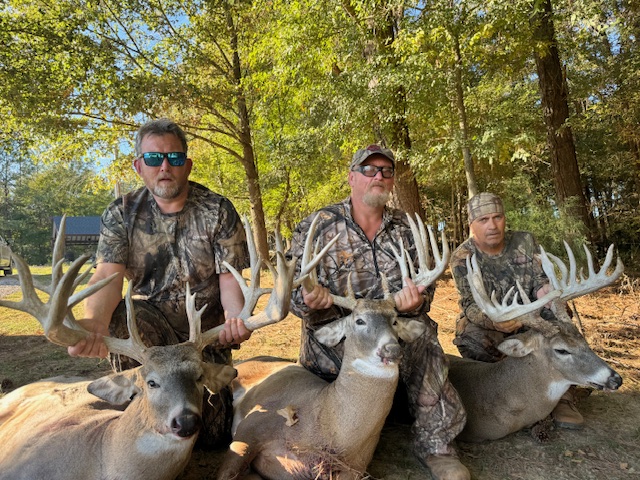
Your Fast Start Guide to Judging Giant Whitetails
How big is a buck? If you have ever stared at a heavy rack at first light and felt your heart hammering, you know the thrill of that question. In this guide, you will learn how to tell the difference between 170″, 180″, and 200″ bucks, what separates each class, and how to score antlers the right way. We include detailed photo-style descriptions, field judging tips, and a step-by-step scoring process so you can size up your next trophy. At Cedar Ridge Whitetails in southern Illinois, we guide hunters onto deer in the 170–179, 180–199, and 200+ classes. Use this playbook to recognize the buck of a lifetime and make the most of your hunt. Start now.
What Is Antler Score and Why It Matters
Antler score is a system that adds up tine length, main beam length, inside spread, and mass measurements. The Boone and Crockett system is the most widely used for typical and non-typical whitetails. It provides a common language so hunters can compare antlers in a fair, consistent way. When someone says a buck is a 170″ deer, they are talking about the total inches after adding up those measurements. Some hunters also talk about gross score and net score. Gross score is the total without deductions for asymmetry. Net score subtracts differences between matching tines and abnormal points on typical racks. At Cedar Ridge Whitetails, we often reference both numbers, but we encourage hunters to appreciate the full picture of a rack. Heavy, tall, and unique antlers create memories, not just numbers.
Key Terms You Need to Know
- Main beams: The two sweeping antler beams that extend from the bases and curve forward.
- Brow tines or G1s: The first points off the main beam above the burr.
- G2s, G3s, G4s: The next points upward from the main beams. Tall G2s and G3s drive score fast.
- Inside spread: The distance between the main beams at their widest inside point.
- Mass: The circumference measurements around each beam at four locations. Thick mass adds many inches.
- Typical vs non-typical: Typical racks have symmetrical points off the main beams. Non-typical racks feature extra points like stickers, drop tines, and kickers.
How Big Is a 170″ Buck
A 170″ whitetail is a serious trophy almost anywhere. In most regions, a mature buck with great symmetry and strong tine length will land in the 170s. Many 170-class deer are clean typical tens with good mass and a solid spread.
What to Look For on a 170″ Buck
- Main beams often run 24 to 27 inches with a strong forward sweep.
- Inside spread typically falls between 17 and 20 inches.
- Brow tines are usually 4 to 7 inches. Longer brows can push a rack higher.
- G2s and G3s are the engine. Expect 9 to 12 inch G2s, with G3s close behind.
- G4s may be present on a 10 or 12-point rack, commonly 4 to 8 inches.
- Mass measurements around 4 to 5 inches at each station add helpful inches.
Body and Frame Clues
A 170-class rack looks tall and balanced above a mature body. On a thick-necked Illinois buck, the antlers reach well past the ears and stand higher than the ears by several inches when viewed head-on. The main beams often meet or nearly meet in front when viewed from above. From the side, you will notice a smooth, even look between left and right antlers.
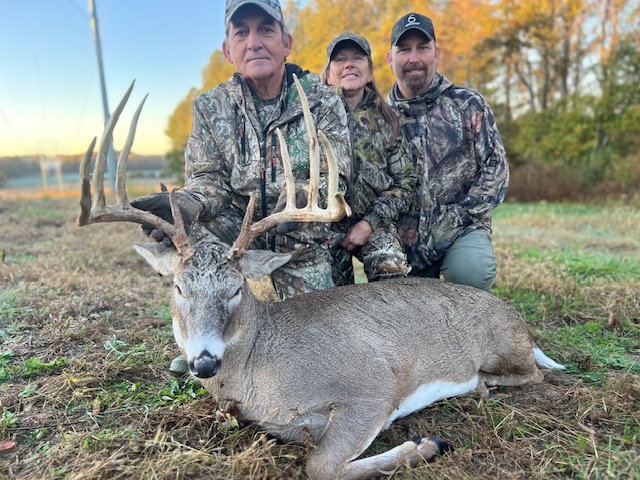
Photo Example Walkthrough: 170″
Imagine a clean 10-point on the edge of a cornfield at Cedar Ridge Whitetails. The brows are 6 inches each, the G2s are a touch over 10, and the G3s run 9. The G4s add 5 to 6 inches each. The inside spread hits 18 inches, and the beams pull 25 inches apiece. Mass measures 4.5 inches average across. Add that up and you are in the low to mid 170s. The rack looks sleek and proportional. It turns your head, but it does not look heavy and knotted like a 200-class deer.
How Big Is an 180″ Buck
An 180″ buck is elite. The leap from 170 to 180 seems small on paper, but in the field it is obvious. Extra tine length, more mass, or a wider spread pushes the frame into a different league. Many 180-class deer still present as very clean typicals, though some will carry a sticker or two without hurting the gross score.
What to Look For on an 180″ Buck
- Main beams often stretch 26 to 29 inches with strong curl and depth.
- Inside spread is often 18 to 21 inches.
- Brow tines push 6 to 9 inches, sometimes with a little flare or split.
- G2s and G3s often jump to 11 to 13 inches, creating a tower-like look.
- G4s become more meaningful, commonly 6 to 9 inches on a big 10 or 12.
- Mass increases. Expect 4.5 to 5.5 inches around the beams at each station.
Body and Frame Clues
An 180-class rack carries a heavier look, especially at the bases and through the beams. Points appear longer and more dagger-like. From a front view, the beams typically clear the ears by several inches and flare outward with authority. From a side view, the beams sweep forward and maintain thickness near the tips. The rack looks tall and heavy at the same time.
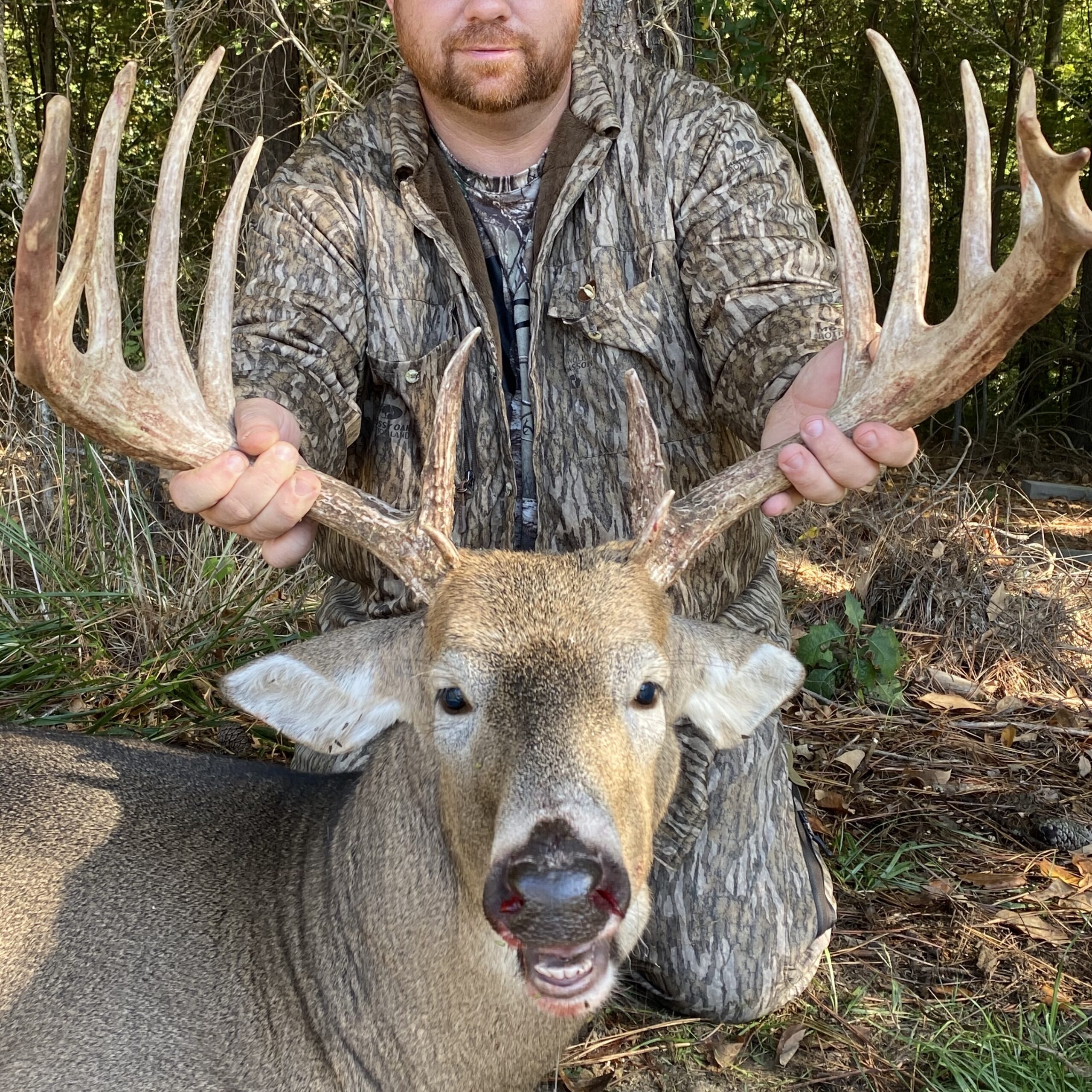
Photo Example Walkthrough: 180″
Picture a hardwood ridge above a cedar thicket at Cedar Ridge Whitetails. An 11-point steps out with a big chest and sagging gut. The brows are 7 and 8 inches. The G2s measure 12. The G3s run 11. G4s hit 8. The spread is 20 inches, and the main beams hit 27 and 28 inches. Mass averages 5 inches at each measure. Even with a small sticker, the gross score crosses 180. In a photo, you notice the beams look thick almost to the tips, and the tines rise well above the ear tips.
How Big Is a 200″ Buck
A 200″ buck is beyond rare in free-range settings and remains a once-in-a-lifetime trophy in most hunters’ minds. These racks are often non-typical, with extra points that throw huge gross scores. Some exceptional typicals break 200, but that is uncommon. The first impression is shock. The rack looks chaotic, tall, wide, and heavy all at once.
What to Look For on a 200″ Buck
- Main beams often push 28 to 32 inches, sometimes more.
- Inside spread can be 19 to 23 inches, though narrow 200s exist when they have massive tine length and extras.
- Brow tines commonly exceed 8 inches, with splits or stickers possible.
- G2s and G3s can reach 13 to 14 inches, and G4s add real length.
- Mass is striking, with 5 to 6 inch circumferences and heavy bases that appear club-like.
- Non-typical points are common. Kickers, drop tines, split tines, and clusters add significant inches.
Body and Frame Clues
A 200-class rack usually dwarfs the buck’s head. From the front, the antlers seem to surround the face. From the side, you see deep beams with layers of points. Even at distance, the frame has a crowded look. When the deer turns, the beams may almost touch in front from their length and inward curl.
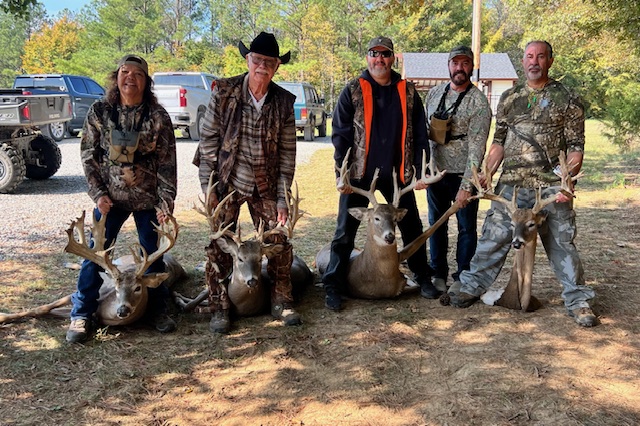
Photo Example Walkthrough: 200″
Picture a late November giant stepping out of a pine and cedar thicket into a food plot at Cedar Ridge Whitetails. The beams are 30 inches, the inside spread hits 22 inches, and the mass stays thick all the way out. The brows both break 8 inches with splits. The G2s and G3s tower at 13 to 14 inches. Add a drop tine on one side and three kickers off the G2s. The rack looks like a chandelier. The gross leaps over 200. In a photo, the skull plate appears small because the mass and points overwhelm it. This is the kind of deer that steals your breath before you see the whole body.
Field Judging Checklist: Fast Decisions Under Pressure
- Quick spread check: Are the beams outside the ears by 2 to 4 inches or more
- Tine towers: Do the G2s and G3s look longer than the ear length by several inches
- Beam length: Does the beam reach toward the nose or even past it when viewed from the side
- Mass at a glance: Do bases look as thick as your wrist and stay heavy out to the tips
- Symmetry vs extras: Clean and balanced for typical score or stacked with stickers for big gross
- Body size context: Mature Midwest bodies make racks appear smaller. Adjust up when the body is huge.
How to Score a Buck Step by Step
- Measure the inside spread at the widest inside point between main beams.
- Measure each main beam from the burr along the center of the beam to the tip.
- Measure all normal points that arise from the top of the main beam, starting with G1 brows, then G2, G3, G4, and any G5s.
- Take four circumference measurements on each beam between points: H1 at the smallest place between burr and G1, H2 between G1 and G2, H3 between G2 and G3, H4 between G3 and G4. On an 8-point, you still take four by continuing the last segment.
- Record any abnormal points that do not originate from the top of the beam, such as stickers and kickers, for non-typical score.
- Add the measurements for gross typical. If you want a net typical score, subtract side-to-side differences and abnormals per the Boone and Crockett rules.
- Use a cloth tape and be consistent. Round to the nearest eighth of an inch for accuracy.
Common Mistakes When Judging Giants
- Overrating spread: Wide racks look big, but tine length and mass add more inches.
- Ignoring mass: Four circumference measurements per side can stack 35 to 45 inches on a big buck.
- Underestimating body size: A heavy Illinois body can trick your eye into calling a 180 a 170.
- Angle illusions: Quartering angles shorten the look of tines. Try to judge with a broadside or head-on reference.
- Counting points without measuring: A lot of points does not always mean 180+. Length and beam depth rule the day.
Photo Judging Tips You Can Practice at Home
- Use ear length as a ruler. An average mature buck’s ear is about 6 to 7 inches from base to tip.
- Compare tines to the nose-to-eye distance. On many deer, that runs around 7 to 8 inches.
- Look for light gaps under tines. Large empty spaces between the main beam and the top of the tines indicate long G2s and G3s.
- Watch shadow lines. Heavy mass throws darker shadows along the beams and tines.
- Check for curvature. Longer beams curve forward and may appear to wrap around the face.
Why Southern Illinois Produces Big Bucks
Southern Illinois blends fertile soil, thick cover, and low-pressure locations that let deer reach maturity. At Cedar Ridge Whitetails, we manage a private reserve with mature timber, pine and cedar thickets, thick draws, cornfields, and food plots. This mix provides food, bedding, and security, which are the keys to growing tall, heavy racks. When you ask how big is a buck in our area, the answer is simple. Big. With the right age class and nutrition, 170, 180, and even 200+ bucks are on the table.
Hunt Classes and Services at Cedar Ridge Whitetails
Private Guided Hunts
Every hunt with Cedar Ridge Whitetails is exclusive to your party. That means your guide, your stands, and your plan. You get personal attention, from glassing edges of cornfields at dawn to slipping into thick draws during midday. Our goal is simple. Create a thrilling, safe, and successful hunt.
Trophy Classes
- 170–179 inches: Classic giants with tall tines and strong beams.
- 180–199 inches: Elite bucks with next-level mass, length, and frame.
- 200 inches and above: The legends. Often non-typical with staggering growth.
Lodging and Comfort
Our on-site lodging keeps you close to the action. Rest well, share stories, and be ready to move when the wind is right. You focus on the adventure. We handle the details.
How Big Is a Buck: Quick Visual Comparisons
- 170″: Clean, tall, balanced. Beams in the mid-20s, strong G2s and G3s, good mass. Looks big without looking crowded.
- 180″: Heavier and taller. Beams push upper 20s, long tines, obvious mass, and possible extras. The rack looks bold from any angle.
- 200″: Massive, layered, and often non-typical. Multiple extras, long beams, and heavy mass. The rack overwhelms the face.
Field Scenarios to Practice Your Eye
The Cornfield Edge
A buck steps out with ears pointed forward. Use the ear width to estimate inside spread. Compare tines to ear length for a quick read on G2 and G3. If the antlers clear the ears by several inches and the tines tower above the ear tips, you may be looking at 180-class or better.
The Timber Shadow
In mature timber with filtered light, mass shows as thick shadow bands. If the bases look like clubs and the beams stay thick near the tips, that depth equals big inches. Add notable tine length and you are in 180+ territory.
The Head-On Stare
When a buck faces you, the frame tells the story. A 170 has clean symmetry and lift. A 180 shows more width and longer tines with weight. A 200 crowds the face with points and heavy curl.
Frequently Asked Questions
How big is a buck in inches on average
Most mature whitetails harvested across North America fall below 150″. In managed areas like Cedar Ridge Whitetails, genetics, age, and nutrition allow deer to reach 170, 180, and even 200+ inches. The average depends on local pressure and habitat quality.
Is spread or tine length more important
Tine length adds more inches than spread in most cases. Spread helps, but long G2s and G3s plus heavy mass are the core of big scores.
Can an 8-point hit 170″
It is rare but possible with exceptional beam length, mass, and very long tines. Most 170-class deer are 10 or 12 points.
What is the difference between gross and net score
Gross score is the sum of all measurements. Net score subtracts differences and certain abnormal points for typical entries. Many hunters use gross score to capture the full character of a rack.
Will a few stickers hurt my score
They add to gross score and take away from net typical score. If you aim for a non-typical total, they help your number.
Training Your Eye Before the Hunt
Practice judging deer by studying photos and videos from multiple angles. Pause and estimate spread, beam length, and tine height before checking any posted score. Keep a notebook of your guesses versus actual numbers to calibrate your eye. At Cedar Ridge Whitetails, your guide can walk you through this process during scouting and stand sessions so you have confidence when it is time to decide.
Why Choose Cedar Ridge Whitetails
We are a family-owned preserve in scenic southern Illinois with diverse habitat tailored to whitetails. Our private guided hunts are exclusive to your group, and our trophy classes range from 170–179 to 200+. With mature timber, pine and cedar thickets, thick draws, cornfields, and food plots, our deer have everything they need to grow big and live long. If you are asking how big is a buck on our ground, the answer is simple. Big enough to keep you awake the night before your hunt. Big enough to shake your knees at sunrise. Big enough to remember for life.
Make the Most of Your Shot Opportunity
- Confirm pass or shoot thresholds before your hunt. Decide on your target class with your guide.
- Use the 3-second check: spread, G2 height, and mass. If all three scream big, do not hesitate.
- Trust your first impression. If it looks like a chandelier, it probably is. If it looks tall and clean, think 170–180.
- Focus on a steady rest and pick a hair, not the whole shoulder. Good judgment means little without a clean shot.
Ready to Chase Your Trophy
If your dream is a 170, 180, or 200-class whitetail, the path starts with knowledge and ends with a heart-pounding moment in the stand. Now that you understand how to judge spread, beams, tines, and mass, it is time to put it to work. Cedar Ridge Whitetails offers private guided hunts, on-site lodging, and carefully managed habitat so you can focus on the thrill. How big is a buck on your next hunt It can be the biggest of your life. Get your gear ready, sharpen your eye, and step into the timber. Start now.

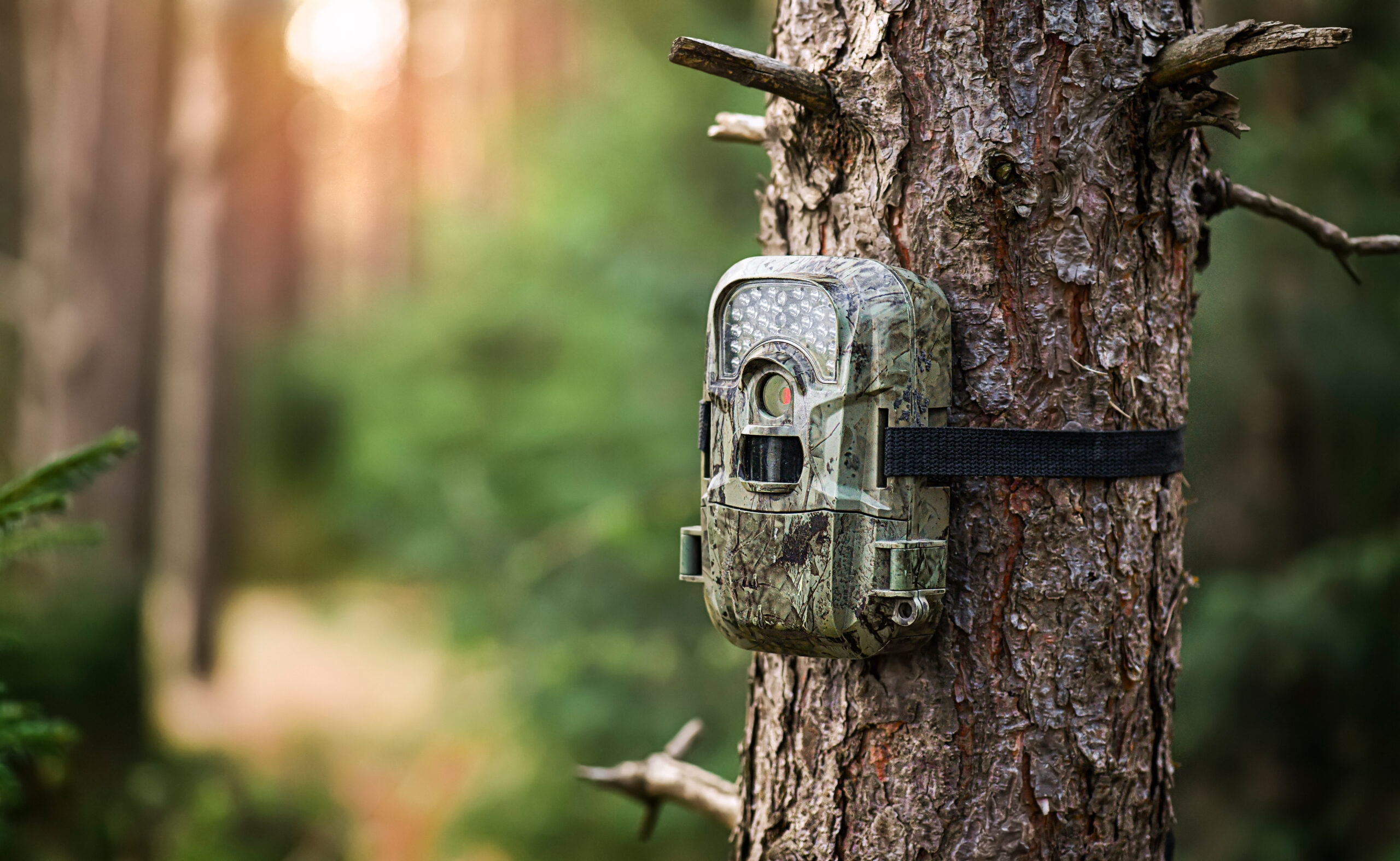
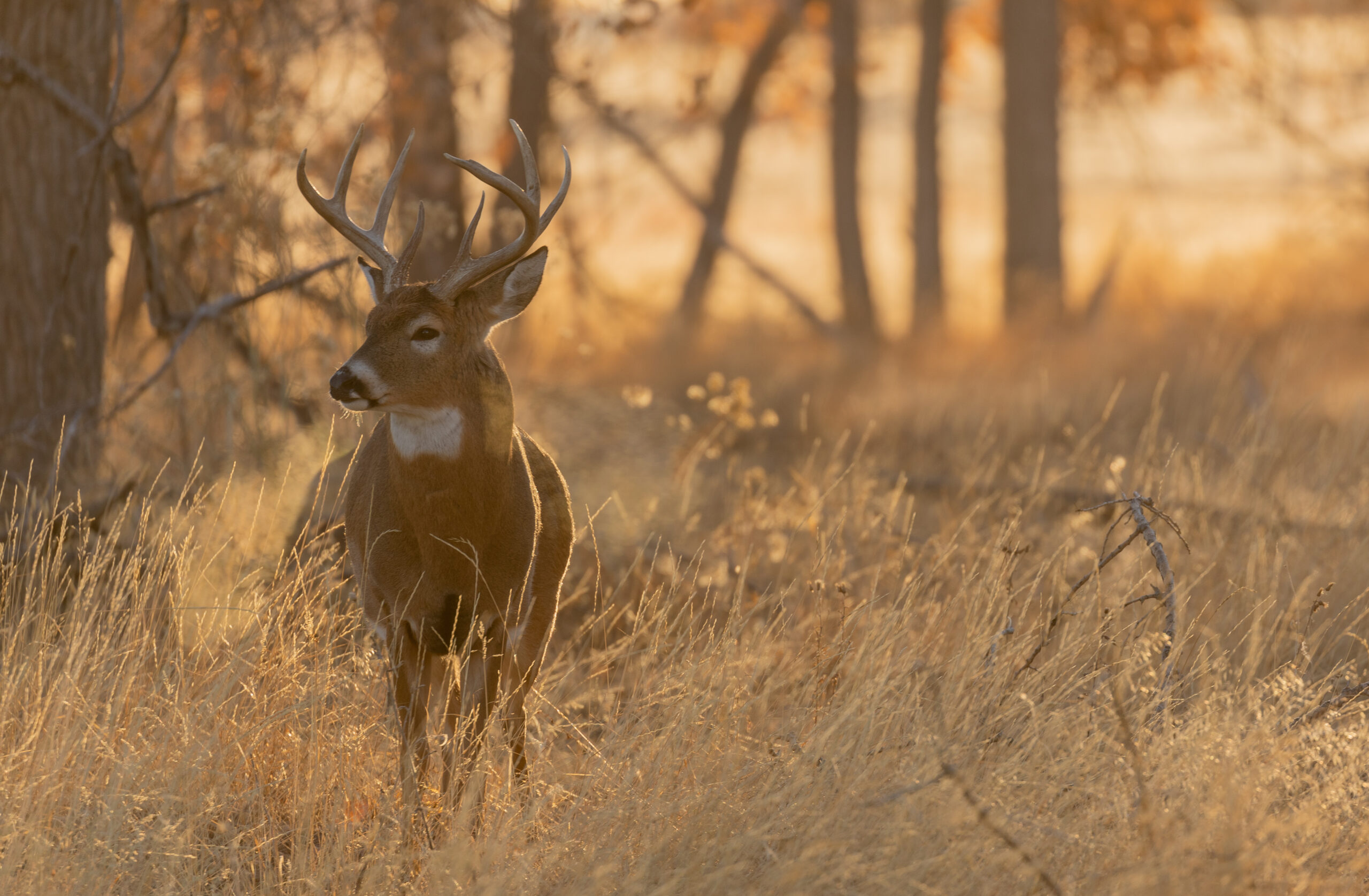
Leave A Comment